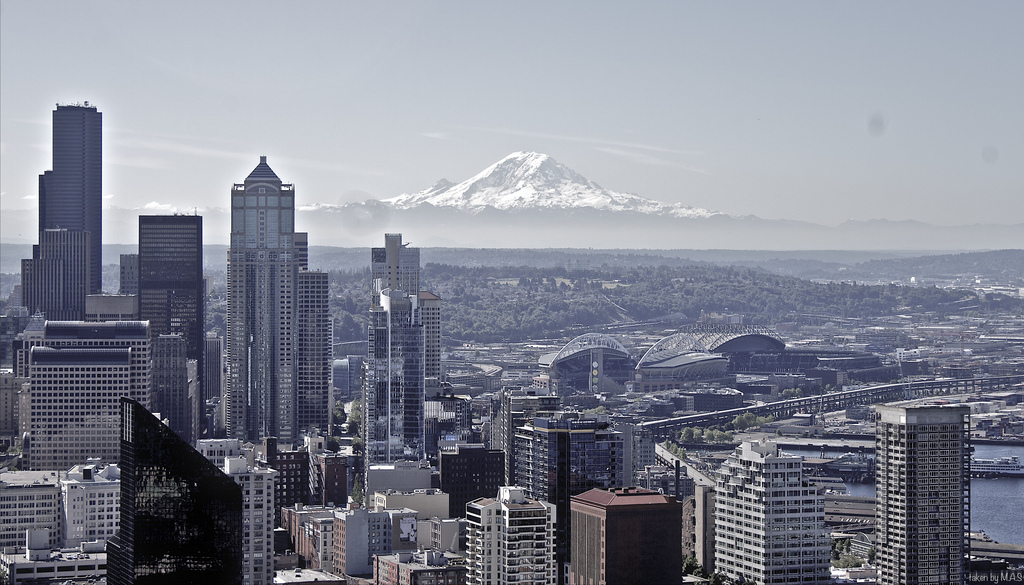The Seattle Times published my op-ed on housing in Seattle’s single-family zones this morning. Here’s the slightly longer version I submitted:
[prettyquote align=right]”The point of affordable housing is not the housing, it’s the people who will live in it.”[/prettyquote]
In 1993, when I was 28 and my second child had just been born, I rented a two-bedroom house in the Central District near where I grew up. I paid $800 a month. That’s how my Seattle housing story begins, and it’s typical of my generation. In that house, I started the venture I still run, which now employs 14 people. In time, I was able to buy, and now I live in a house in Ballard that’s somehow appreciated to a shocking $700,000.
The housing stories of young people nowadays are radically different. My friend Tania who grew up in the CD a generation after me, cuts hair downtown and commutes by bus from a row house in Everett. That’s the closest family-sized place she, her husband, and their baby girl can afford. She hopes to start a business as a clothing designer soon, if she can get ahead of her bills. My friend Meaghan, a new mom, may move to Renton to find an affordable two-bedroom place. Her husband is starting a new career, and Seattle’s rents are crushing their finances. Tania and Meaghan are among the lucky ones: they have jobs and supportive families. Thousands of members of our community sleep under bridges or in cars each night, pushed there in part by our city’s white-hot real estate market.
Housing affordability has become the defining challenge of Seattle’s growth. For the past ten months, I’ve served on the Housing Affordability and Livability Advisory (HALA) Committee. Mayor Ed Murray asked us for a plan to turn Seattle back into an affordable city.
Of all the recommendations in HALA’s 65-point plan, the most controversial part concerns the city’s single-family neighborhoods. It deserves explanation fourways.
First, the purpose of changing single-family zoning is to welcome families who aren’t rich. It’s to enable the Tanias and Meaghans to live in these neighborhoods too, renting and perhaps buying someday, and contributing their talents to our city all along the way. The point of affordable housing is not the housing, it’s the people who will live in it.
Second, HALA had no choice but to recommend changes to single-family zoning. Affordability demands the reforms. Almost two-thirds of Seattle’s zoned land is currently reserved for detached houses. Seattle cannot accommodate the tens of thousands of people who are moving to our community without many of them landing in the single-family zones. Already, growth has made these neighborhoods exclusive to the point of exclusion: intensifying scarcity means only people with money or people from families with money can buy there now. Even small houses in popular neighborhoods start above half a million dollars. Seattle is well down the path to Silicon Valley’s $1 million entry price for home ownership.
Third, HALA’s recommendations for bigger buildings in single-family areas is limited: fiddling around the edges, literally. HALA says to upzone just 6 percent of them. This 6 percent sits inside of or adjacent to the city’s designated growth hubs, its urban villages, or alongside arterial strips already lined with big buildings.
[prettyquote align=right]”Seattle is well down the path to Silicon Valley’s $1 million entry price for home ownership.”[/prettyquote]
Fourth, HALA recommends more flexibility, but not bigger buildings, on the other 94 percent of the single-family zones. These areas would stay under existing rules for building sizes: same height limits, same restrictions on total square footage, same setbacks. What would change is that city codes would allow more options in dividing up that square footage. We recommend more in-law apartments, backyard cottages, cottage clusters, miniature duplexes and triplexes, courtyard housing, rowhouses, townhouses, and stacked flats. We also recommended allowing separate ownership of these dwellings, so that more people can afford to buy homes.
These suggestions reflect the range of housing types that actually already pepper our single-family neighborhoods, left over from before current restrictions. My friends Chris and Mary live in Wallingford on a neighborhood greenway. The three-story home they have restored themselves is surrounded by gardens and a chicken coop. It’s divided into three flats; they live on the top floor. My friends Valerie and Brian live in a classic old Capitol Hill house with a downstairs in-law apartment, which they rent to a single mom. Two doors up from my friends Pete and Christine, in a single-family zone in Ballard, is a triplex—two up, one down—built decades ago. My friend Rick lives near Greenlake and can point to the converted corner stores with apartments up top that are sprinkled through his neighborhood.
HALA means to say, in short: more like that! Neighborhoods will feel the same. The same tree cover and lawns, the same porches and rain gardens, the same chicken coops and tiny lending libraries. But more people. More people like Tania and Meaghan and their husbands and children. More people like my own children, now in their twenties, who I hope can live in their hometown someday and possibly own homes. And more people like 28-year-old me.


Comments are closed.